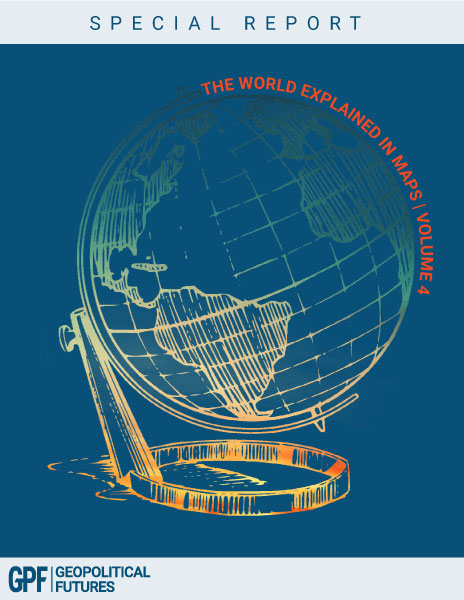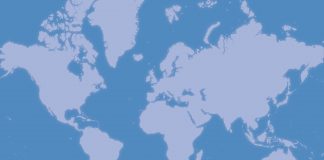There is an interesting pattern that takes place in the global system. A nation emerges that is able to produce industrial products at low cost, primarily because of cheap labor and productive innovation. This country has a stunning impact on the global system’s economy, and then about 40 years into the cycle the nation’s economy weakens, sometimes catastrophically. This is normally because, as an exporting giant, it depends on its customers to buy its wares, and at some point they either can’t or won’t. The country goes into a crisis that seems likely to crush it, but in due course it recovers, sometimes economically stronger than ever, and a new country replaces it as the low-cost producer. There are not many cases like this, since 40 years is a long time; adding the period of apparent decline seems to complete the cycle in 50 years. That means three such nations would eat up 150 years. So I will go with three cases: the United States, Japan and China. (India under the British Raj doesn’t quite fit.)
Let’s begin with the United States, the first “China” if you will. The Civil War ended in 1865. About a decade later, the United States began its own industrial revolution, which hit its stride in about 1890. It was built on producing low-cost manufactured products for consumption by European countries that were focused on the production of higher-value products. By 1900, the United States was producing half the manufactured goods in the world. American innovation centered on cutting production costs and dominating foreign markets. It created massive capital formation in the United States and seemed to portend U.S. economic domination of the world. What, after all, could stop us?
What stopped us was World War I. It wrecked Europe, Washington’s most important buyer, and slowly at first in the 1920s then with increasing speed, it broke the economic system the United States had created. The result was the Great Depression and the first American industrial purge. Obviously, it did not mean the end of the United States or even its economic preeminence, but it introduced a painful pause and social upheaval. It was not Smoot-Hawley tariffs or monetary policy that created the Depression but the destruction of America’s customers. The cycle began in earnest about 1890 and ended about 1930 – a period of 40 years – and then recovered during World War II.
Japan is the second case. It was decimated in World War II. Then around 1950, it began its economic surge. During the Korean War, the U.S. had to import equipment from nearby Japan. It needed trucks, and rather than take the time to buy them in the U.S., it asked a small Japanese company if it could make them. And so it did. The name of the company was Toyota, and it was one of the firms that over time produced cheaper but quite usable cars for the U.S. market, hammering U.S. makers in the process. Japan’s educated and disciplined workforce and the collapse of the Japanese economic system reduced labor costs dramatically, allowing Japan to become the low-cost giant of the world by the 1960s.
Japan’s success had a huge effect on the world and particularly on its largest customer, which put massive political pressure on Japan to shift its export policies and increase American imports. Japan’s economy was built on cost-effective exports, so that was not an option. But more important, the export policy was a government policy, and the banking system was built to support it. The banking system invested in these exporting manufacturers to an extreme degree to achieve Japan’s political goals, and at a certain point, the ability of Japanese exports to balance the extreme exposure of Japanese banks failed. Japan underwent a massive financial crisis that peaked around 1990 – 40 years after the Japanese boom started. Japan spent the next decade or so reorganizing itself into something other than a country that depended on price differentials to fuel its economy. It has recovered nicely.
It was replaced by China. The death of Mao (and Maoism) opened the door for China to replace Japan as a low-cost, high-volume producer of exported goods. Like the U.S. and Japan, it emerged from a system that had been wrecked. But it had a fairly disciplined if not sophisticated workforce that could manufacture basic industrial goods and, over time, as with Japan and the United States, increasingly sophisticated products for export. Its financial system was heavily based on foreign investment, which had been true of America’s surge, and the inflow of capital made China seem destined to dominate the world (business economists seem to draw too many straight lines). As with Japan, China encountered the reluctance of the United States – its main customer – to continue to absorb the social costs of Chinese exports.
A global dislocation from COVID-19 also created dislocations in Chinese exports as the economy’s financial foundations were increasingly vulnerable to relatively small shifts in revenue. Over the past few days, the Chinese government has taken steps to stabilize the social and political consequences of a cycle reaching its end. China is far from finished, but as with any macro business cycle, and as with the U.S. and Japan, it must pause, regroup and emerge as something different from what it was.
The Chinese surge started circa 1980. It now faces the political issue of maintaining stability while it deals with a financial and export crisis. Think of it as China’s Great Depression or Lost Decades. Any extended and virtually uninterrupted surge creates massive weaknesses in the economy, which generates social, political and economic crises. Every nation handles this differently, but in national economics, the business cycle always lurks. For massive exporters, it disrupts the world. One consequence is capital flight – internal capital dries up, external capital flees, and a new exporting miracle takes place in a country no one imagines. How could the U.S. prosper after the Civil War? How could Japan recover after Hiroshima? How could China after the Cultural Revolution transform its very soul?
This process seems to be built into modern capitalism. There is a hunger for low-price manufactured products by wealthy countries that can no longer afford to produce them. Why does the cycle take 40 years? I have no explanation. It could be coincidence if there were only three cases. Or there could be some structural cause. But it is there, and it seems to be reaching its terminal stage in China. China, of course, isn’t going anywhere, and it will be a permanent economic power after it stabilizes. But the breathless blather of its taking over the world will have been proved wrong. Another country we never expected will take its place, and then we will claim to have always known it was there.






